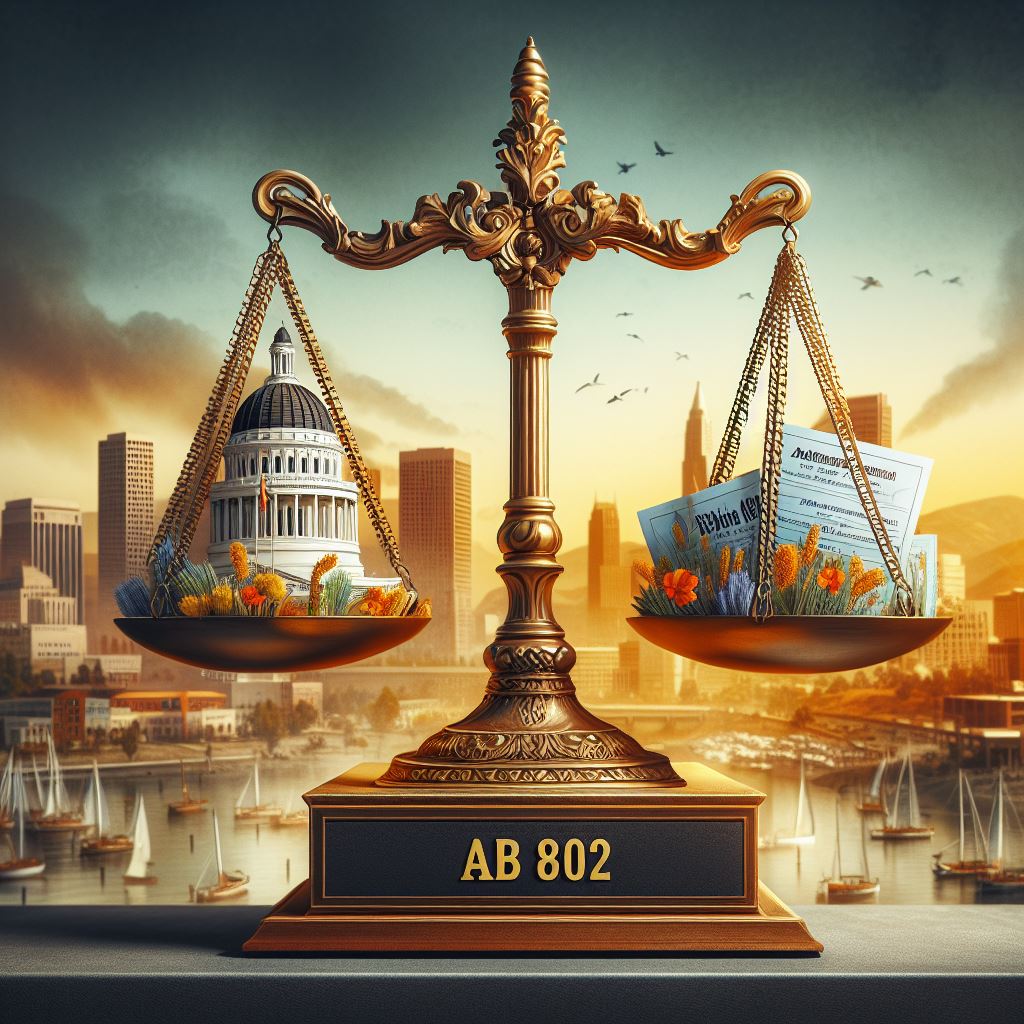The clock is ticking for building owners across California. In a short while, the AB 802 compliance deadline will arrive on June 1, 2024. The importance of readying your property to comply with this energy efficiency mandate cannot be overstated. Delve into what AB 802 entails and how to navigate its requirements with this essential guide—crafted to ensure you’re well-prepared before the due date.
I. Introduction
In a world increasingly aware of its carbon footprint, Assembly Bill 802 (AB 802) emerges as California’s legislative stride towards a healthier planet. AB 802 represents a significant shift in the state’s approach to energy information, and with the firm deadline of June 1, 2024, for compliance, building owners are obliged to act swiftly. The mandate, which pertains to the public disclosure of energy consumption, is poised to revolutionize energy efficiency in commercial and residential buildings alike.
II. Overview of AB 802
What is AB 802?
AB 802 is an innovative standard set by the California State Legislature, mandating that owners of certain buildings track and report their energy usage annually. This benchmarking measure is a cornerstone of the state’s comprehensive plan to cut down on energy waste, promote public awareness of energy usage, and catalyze improvements in building performance.
Brief History and Purpose of AB 802
Signed into law on October 8, 2015, AB 802 replaced and expanded upon the earlier bill, AB 1103, which had been critiqued for its limited scope and impact. AB 802’s purpose extends beyond mere benchmarking—it aims to foster energy conservation, reduce greenhouse gas emissions, and encourage the implementation of energy-efficient upgrades, thus contributing significantly to California’s broader environmental and sustainability goals.
Who is Afflicted by AB 802?
The legislation specifically affects owners of non-residential buildings spanning over 50,000 square feet, as well as multifamily residential buildings housing 17 or more units. This demographic embodies a significant share of California’s built environment. Therefore, if you’re part of this category, the urgency to acquaint yourself with the specifics of AB 802 cannot be overstated.
III. Details about AB 802 Compliance
What Does “Compliance” Mean in the Context of AB 802?
Compliance with AB 802 goes beyond merely acknowledging the law. It requires a tangible demonstration of adherence through the yearly documentation and submission of energy consumption data. This process demands engagement with the ENERGY STAR Portfolio Manager, a tool developed by the U.S. Environmental Protection Agency (EPA), to aid in the accurate reporting of this information.
Requirement Details According to Building Size and Type
The heart of AB 802 lies in the meticulous details of its requirements. Buildings over 50,000 square feet must submit reports detailing their total energy usage, which includes all utilities consumed by the building. Residential buildings with more than 16 units are also subject to these reporting standards. Understanding these nuances is critical for ensuring you’re on the right side of the law.
Timeframes for Compliance
While the June 1, 2024 deadline is indeed the most imminent, the requirement for ongoing compliance must be ingrained in the operations of affected properties. Annual reporting is not a one-off task; it is a continuous duty that building owners must fulfill to remain compliant with AB 802.
IV. The Importance of AB 802 Compliance
Legal Implications of Non-Compliance
The legal ramifications of ignoring AB 802 can be costly. Fines and enforcement actions are the stick to the carrot of energy savings, and the state is not shy about employing them. Beyond the threat of financial penalties, non-compliance can also tarnish a property’s reputation, potentially making it less attractive to environmentally conscious tenants and buyers.
Potential Benefits to Building Owners
While compliance is a mandate, the benefits it reaps are a boon. Energy transparency can lead to cost savings through the identification of inefficiencies and subsequent retrofitting. Additionally, a reputation for energy consciousness can make a property more competitive, attracting tenants who prioritize sustainability and wish to reduce their own carbon footprint.
Environmental Impact
The environmental benefits of AB 802’s compliance are far-reaching. By pushing for energy efficiency and reducing consumption, buildings can significantly diminish their impact on the environment. The collective efforts of all compliant buildings amplify the state’s ability to reach its ambitious climate goals, resulting in a cleaner, healthier California.
V. Steps to Achieve AB 802 Compliance
Detailed, Step-by-Step Process to Meet Compliance
Achieving compliance with AB 802 can be broken down into a series of actionable steps: First, familiarize yourself with the requirements specific to your building type. Next, create an account with ENERGY STAR Portfolio Manager, if you have not already done so, and input your building’s characteristics and usage data. Utility accounts must be linked, and data must be verified for accuracy before the annual submission to the state.
Time and Resources Needed for Each Step
The time and effort required can vary significantly depending on the size and complexity of a building’s energy systems. Owners should anticipate dedicating several weeks to compile necessary data, coordinate with utility providers, and ensure accuracy. Moreover, the need for potentially upgrading infrastructure to track and report data should not be underestimated. It is prudent to allocate resources for professional help if energy benchmarking is unfamiliar territory.
Tips for a Seamless Compliance Procedure
Organization and diligent planning are the hallmarks of a painless compliance process. Ensure that all utility bills are readily available, and data is collected systematically. Establish a clear communication channel with your utility providers and seek out professionals for guidance. Digital tools can aid in data management and ensure the process runs smoothly, preventing any last-minute scrambles.
Resources for Help with AB 802 Compliance
Government Resources and Guides for Compliance
The California Energy Commission provides extensive resources, including guidelines and workshops, to assist owners with AB 802 compliance. Leveraging these tools can greatly simplify the process and clarify any confusing aspects of the legislation.
Professional Services That Can Assist with Compliance
Consultants specializing in energy management and AB 802 compliance can be invaluable, especially for those who are new to the process or own multiple properties. Their expertise can save time, reduce the risk of errors, and ultimately ensure that compliance is achieved without complications.
Tools and Software to Facilitate Compliance
Utilizing software designed for the task at hand can be a significant advantage. ENERGY STAR Portfolio Manager is the primary tool, but additional resources and applications exist to manage the data collection and reporting process more efficiently.
VII. Preparing for the Compliance Deadline
What to Do if You’re Not Compliant Yet
If your property currently falls short of compliance, the time for action is now. Begin by assessing your energy tracking mechanisms, ensure all relevant accounts are active on ENERGY STAR Portfolio Manager, and start the process of data collection without delay.
Last-Minute Tips and Reminders
As the deadline approaches, it’s crucial to triple-check that all utility data is up to date, submissions are verified, and any discrepancies are addressed. Underestimating the lead time needed for utilities to process requests can lead to unwanted surprises, so act with a sense of urgency.
How to Confirm Your Compliance
Once submitted, you can confirm your property’s compliance status through the proper channels within the state’s reporting system or consult directly with their help desks for confirmation and peace of mind.
VIII. Conclusion
As the AB 802 compliance deadline of June 1, 2024, rapidly approaches, the imperative for building owners to act is clear. This law not only serves as a legislative requirement but as an opportunity to partake in a movement towards a greener, more sustainable future for California. By taking the necessary steps now, building owners can bypass the stress of last-minute efforts, paving the way for a smoother transition and ensuring they are part of the broader solution to our environmental challenges.
VertPro.com serves as a resourceful platform for property owners and managers seeking commercial Energy Audits, Benchmark Compliance consultancy, and a Construction Marketplace. At the heart of VertPro® is a suite of SaaS technology-based solutions designed to assist in navigating the complexities of Energy Benchmarking and Energy Audits/RCx Plus, while ensuring adherence to over 60 Energy Benchmarking and Energy Efficiency Laws across the country.
For those looking to improve their property’s energy usage and operational value, VertPro.com provides a diverse array of tools and information. The site aims to facilitate a better understanding of energy efficiency practices and legislation, helping building owners and property managers make informed decisions about their energy strategies while complying with all energy ordinances and laws.



